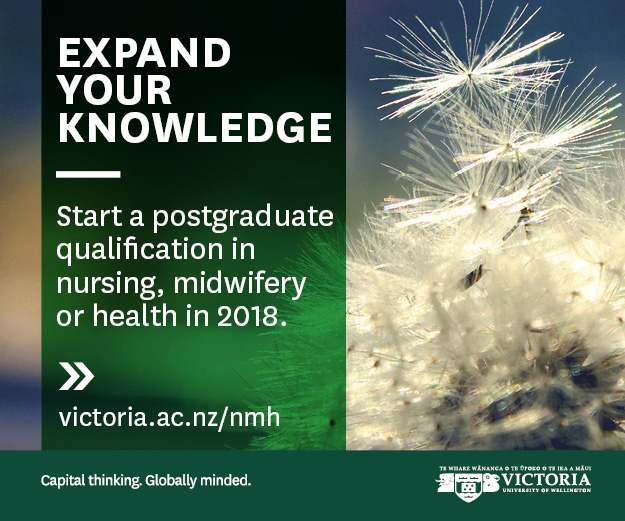Growth records for more than 47,000 South Island children have been entered into an electronic solution designed to track body measurements from birth to death.
The software platform Anthropometrics was introduced across the South Island last year enabling nurses and other clinicians to enter and view height, weight and other key body measurements electronically.
Anthropometrics (or eGrowth Charts) is a shared system developed in Southern District Health Board was rolled out across the region by the South Island Alliance, with access provided via the South Island’s electronic health record, Health Connect South.
In September an announcement was also made of a research project to develop and trial an interactive growth chart that parents can use on their smart phone to monitor their babies and young children growth. That project is being undertaken by Precision Driven Health, combined with child health research funder Cure Kids and the National Science Challenge A Better Start, with one aim being to help reduce childhood obesity rates by providing parent’s accurate information about their child’s growth rates.
Barry Taylor, Professor of Paediatrics and Dean of the Dunedin School of Medicine, University of Otago, collaborated with Lance Elder, Solution Architect at Southern DHB, to develop the South Island’s Anthropometrics (eGrowth Charts) tool. To date the tool has been used to record the body measurements of 55,638 South Islanders (the vast majority children but just over 8000 were of patients aged over 18).
Raising childhood obesity awareness
Taylor, who is also leading the combined South Island district health boards’ childhood obesity strategy, told Nursing Review last year that he believed it was time for a culture change to shift the focus from children failing to thrive to children growing too fast. He said if height and weight measurements and BMI calculations were routine and regular through a child’s life, nurses and others could pick up if the trajectory of growth started to accelerate too fast and show parents what was happening on their child’s BMI chart.
Anthropometrics records height, weight, waist and head circumference measurements at all ages, calculates BMI, provides eGrowth charts for children, and stores blood pressure readings. It compares the data against the ideal growth for the patient’s age and sex. Taylor said another feature of the tool is the ability to predict a child’s final height from their parents’ heights. It also takes into account gestational age and automatically adjusts for children who were born prematurely.
He said to see growth pattern trends it was no use looking at the data once, it had to be observed over a period of time. “Growth rate is a very important measure of health, whether it’s under or over the average, and the tool provides a useful picture over time.”
Dr Nicola Austin, neonatal paediatrician at Christchurch Women’s Hospital, said having weight measurements charted by nursing staff before the child enters the clinic room was really helpful. “I’ve also been adding weight measurements from previous visits into the system, as it’s the in-between visit growth that’s important. One child I saw had grown up in the southern district, so I was able to see all his previous growth measurement since he was born – this made discussing the current growth with his parents so much more meaningful.”
Anthropometrics tool development
Taylor as chair of the South Island Clinical Advisory Group for Childhood Healthy Weight, learned of the ongoing requests across the region for an electronic growth system.
The South Island Alliance also recognised the need for a South Island-wide solution to store data more efficiently. Taylor said a number of competing systems were independently reviewed and Anthropometrics proved to be the best tool available. “A good system needs to be intuitive and make your job quicker and easier, so there is more time for the patient.”
Taylor described Anthropometrics – as a ‘Swiss army’ tool. “It’s simple, easy to use and fits into the workplace. It was designed with what I require as a paediatrician in mind.” He said it was a joint effort with IT and took six to nine months of interaction back and forward to develop and refine.
Better start project
The A Better Start project team says the two-year research project was to get underway in September with the aim of providing a smartphone tool that was easy for families to use but also filled data gaps for health providers.
The team says research shows that a majority of New Zealand parents are limited in their ability to interpret what the current standardised growth chart information in their child’s Well Child (‘Plunket’) book means.
The study’s Principal Investigator Gayl Humphrey said that the project aimed to help increase health literacy among parents and families, while also providing greater awareness of healthy growth patterns in their children. She said the ultimate goal was that supporting the development of knowledge and skills of parents would in the long run contribute to reducing rates of obesity in children.
“Moving to an electronic and interactive growth chart will eventually help us to understand the New Zealand-specific growth patterns across our diverse population, and be able to personalise the delivery of relevant information direct to parents and families when they need it.”
Cure Kids’ CEO Frances Benge said assisting parents to better engage with monitoring their child’s growth would help them to understand and manage their children’s eating, activity, sleeping and related behaviours.





















